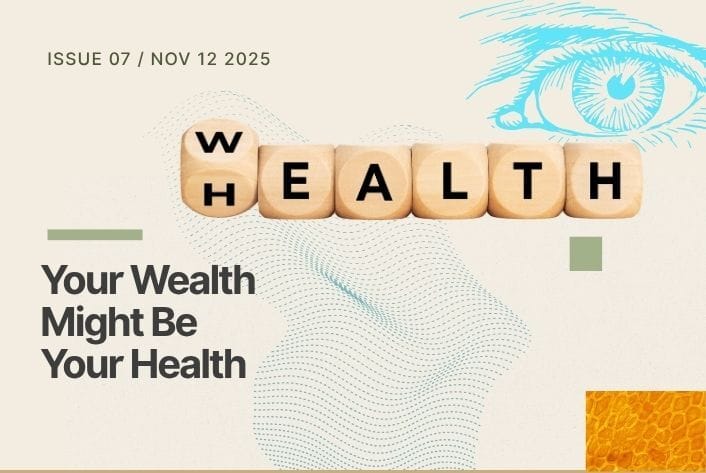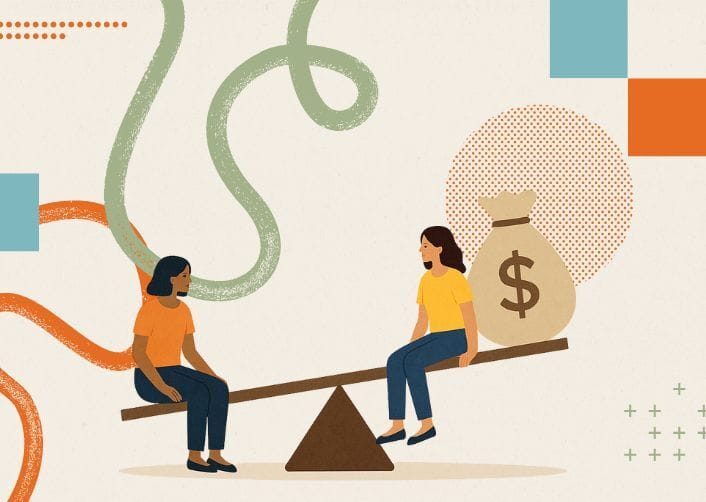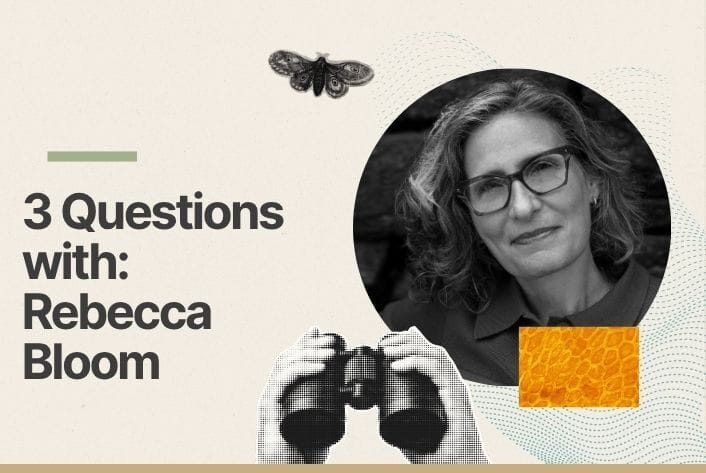Introduction

Each week, The Livelong Woman explores science-backed insights on living longer, healthier, and stronger, all through a woman’s lens. This week, we’re looking at how income and geography can shape our lifespan and how to advocate for yourself within the US healthcare system.
The impact of geography on health is something I’ve often thought about in the past few years, as a woman living in Colorado. Currently, our state law includes a fundamental right to contraception and abortion and prevents insurance companies from denying coverage based on pre-existing conditions, including a history of pregnancy or C-sections. Laws like these protect more of our rights, which leads to better health outcomes. It might also be why my doctors are so open to conversations and knowledgeable about current best practices in women’s health, especially fertility and HRT, compared to some of the stories I hear from friends elsewhere.
Speaking of laws, here’s some recent good news: The FDA will lift warnings on hormone therapy for menopause
Your zip code or income shouldn’t determine your health, though. After researching this week’s newsletter, I’m committed to improving women’s health. For me, that means sharing what I’ve learned and volunteering with organizations that prioritize women’s well-being. I hope that after reading, you’ll be inspired to help move women’s health forward, too, in whatever way works for your season of life.
This newsletter focuses specifically on women’s health and longevity. If that’s not relevant to you, no problem—you can opt out of just the Livelong Woman while staying subscribed to everything else.
Is your wealth your health?
Nine. That’s the number of extra years of life you can expect to live if you are in the highest 10% of earners, according to a recent study from the National Council on Aging (NCOA) and University of Massachusetts Boston's LeadingAge LTSS Center, which studies aging.
Top 10% means a household income of $120,000 or more.
But what if better policies, such as paid family leave and affordable preventive care, could help close that gap? For millions of women juggling work, caregiving, and economic stress, the path to a longer, healthier life starts with both personal choices and public support.
The Connection Between Wealth And Health
It’s no surprise that the more financial resources we have, the longer we can live, but how does this play out for women? After all, the connection between wealth, gender, and health runs deep. Women are more likely to live longer than men, but also more likely to live poorer, especially in retirement. Lower earnings, career breaks for caregiving, and unequal access to healthcare mean many women enter their later years financially vulnerable.
In fact, more than one in ten women in the U.S. is currently economically vulnerable, according to the U.S. Women’s Power and Influence Index. This report also paints a picture of two Americas: one in which women benefit from supportive policies and better health outcomes, and another in which economic insecurity and policy gaps shorten lives. In states that have rejected policies such as paid sick leave, Medicaid expansion, or reproductive rights protections, women face both economic hardship and shorter life (and health) spans.
What’s Behind The Nine-Year Gap?
Diagnostic delays can cost women years, says Dr. Anita Phung, MRGCP and research physician for Lindus Health. Conditions like endometriosis can take 5–10 years to diagnose, and heart disease and autoimmune symptoms are still misread as stress or anxiety, which delays care and worsens outcomes.
It isn’t all doom and gloom, though. The Future Forward report shows that in the states ranked highest for women’s economic status, civic engagement, political inclusion, health, public policy, and legal protections, women report stronger health and longer lives.
When women have healthcare access that fits into their lives, such as remote consultations and scheduling appointments outside of working hours, research shows they show up and healthspan outcomes improve, says Phung.
So what’s a woman to do if they aren’t in the top-ranked states? No matter where you live or what your income is, Phung offers three top tips for greater health throughout your life:
Build strength early on. Muscle is your lifelong ally.
Protect mobility. Think yoga, pilates, and mindful stretching, especially as estrogen levels drop.
Prioritize metabolic health. Aim for consistent meals rich in protein and fiber. And, of course, eat your veggies and fruit.
We can’t always control our zip code or income, but knowledge is its own power. Like me, perhaps you can take something away from these reports and use it to level the playing field for yourself and the other women in your world.

The Livelong Women’s Health Summit was created to help navigate the complex world of women’s healthcare. 75 thought leaders are gathering to discuss the current and future landscapes of women’s health and longevity, and what we can do at the individual and community levels to address the gaps. We’d love to have you join the conversation. (Psst. Use the code TIFFANY for $50 off any ticket option.)
Poll


Are you planning to join us for the Livelong Woman Summit?
Rebecca Bloom, author of “When Women Get Sick: An Empowering Approach for Getting the Support You Need,” has spent 28 years advocating for women with breast and ovarian cancer through Bay Area Cancer Connections. She helps patients navigate the realities of illness — from handling confusing insurance systems and workplace challenges to building support networks and communicating effectively with doctors. Here are her tips for advocating for yourself while dealing with the system.
The hysteria myth dates back millennia. Literally, the Greek word hystera means uterus, so the idea that women are overly dramatic reporters is baked into culture.
Q. What are your top tips for advocating for yourself without burning out while navigating the healthcare system?
A. 1. Be proactive. Reach out to the administrators in your doctor’s office or health system, human resources at your job (or partner’s job), and case managers at your health insurance company. Let these people know you’re on a health journey and that you’d like to reach out if you have any questions or need guidance.
2. Draft a team to help you.
3. Keep your eye on a menu of mindfulness techniques that work for you. Whether it’s meditation, powerwalking, journaling, or something else, find activities, places, and people that make you feel calm and like yourself.
Q. What can we do when we are dismissed while describing symptoms to a healthcare professional?
A. First, what we can do is call it out when it happens.
Second, when I talk with women about how to communicate with their doctors, I recommend being organized and precise. If women help their doctors help them, they can build productive partnerships with their doctors based on trust and clarity.
Q. For women who’ve been dismissed or misdiagnosed, what’s one small step to start regaining control of their health journey?
A. Any woman who feels unheard should go elsewhere, as opposed to second-guessing herself and ruminating about feelings of dismissal and the anger and fear that accompany misdiagnosis. Even though it takes energy and effort, find a better way.
If it feels too big, one small step you can take is to get a second opinion and engage a new expert.

The Watchlist


Explore the full stories below and let us know in our WhatsApp group which one sparks your curiosity most.
What’s on our radar

Ageless Aging: Increasing Women’s Healthspan, Brainspan and Lifespan:
In this video for The Mayo Clinic, Maddy Dychtwald distinguishes between age accelerants and decelerants, and suggests exercises and habits to extend one’s lifespan, brainspan, and healthspan. 🌳

Longevity 101: a foundational guide to Peter Attia’s frameworks for longevity:
This is a comprehensive introduction to longevity, perfect for newcomers or those looking to refresh their knowledge. 📚

Women Need About Half as Much Exercise as Men for the Same Heart Benefits:
A new study, published in Nature Cardiovascular Research, suggests women receive greater benefits than men for the same amount of physical activity. 👀

Poll Response

We asked, you answered:
How often do you incorporate strength training into your weekly exercise?
Color me impressed! Nearly half of you answered “3 or more times/week” with the next most popular answer being “1-2 times/week.” I can feel the strength of this community and I love to see it!

How did you enjoy today's newsletter?
The information provided about wellness and health is for general informational and educational purposes only. We are not licensed medical professionals, and the content here should not be considered medical advice. Talk to a doctor before trying any of these suggestions.








